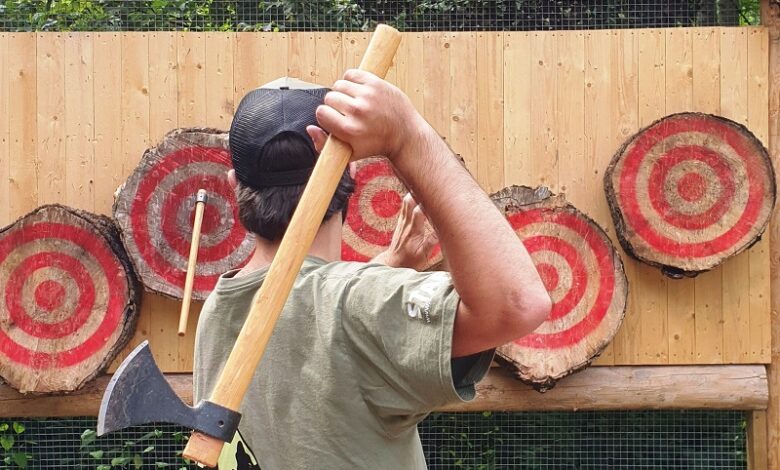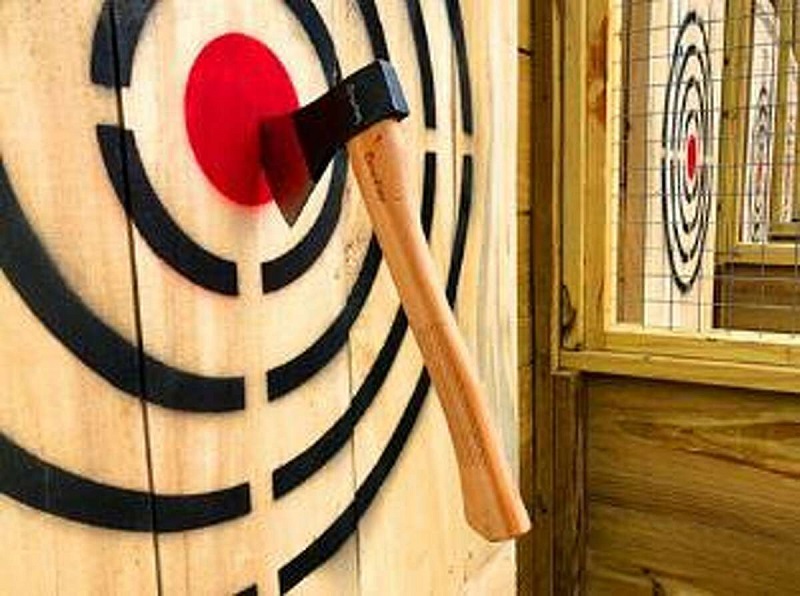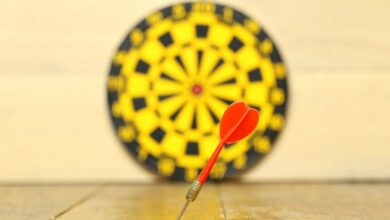
When it comes to sports and recreational activities, the options are as diverse as the interests of the participants. From classics like basketball and soccer to niche pursuits like curling and axe throwing, there’s something out there for everyone. In this article, we’ll take a closer look at how axe throwing measures up against traditional sports. Is it just a passing trend, or does it offer something truly unique and valuable?
Physical Exertion: Strength vs. Precision
Traditional sports often emphasize endurance, agility, and physical strength. Activities like football or basketball demand athletes to be in peak physical condition. In contrast, axe throwing requires a different kind of prowess – one of precision and technique. It’s about mastering the art of releasing an axe with just the right amount of force and rotation to hit a target accurately.
Accessibility and Equipment: From Courts to Ranges
Engaging in traditional sports often involves specialized venues, like basketball courts or soccer fields, along with specific equipment. In contrast, axe throwing requires less infrastructure. A well-designed axe-throwing range can be set up in a relatively small space, making it more accessible in urban environments. Additionally, the required equipment is minimal, with the venue typically providing the axes.
Solo vs. Group Dynamics: Individual Skill vs. Teamwork
Many traditional sports are team-oriented, requiring collaboration, coordination, and strategy. Think of the elaborate plays in American football or the synchronized movements in rowing. Axe throwing, on the other hand, is more of an individual endeavor. While it can be enjoyed in a group setting, the focus is on personal skill and technique.
Risk and Safety: From Helmets to Helmets
Safety is paramount in any sport, and both traditional sports and axe throwing take precautions to minimize risks. In sports like football, players wear helmets and pads to protect against collisions. In axe throwing, protective gear like helmets and closed-toe shoes are essential to prevent accidents. Both activities require adherence to strict safety guidelines.
Stress Relief and Mental Well-being: The Mind-Body Connection
Engaging in physical activities, whether traditional sports or axe throwing, has proven benefits for mental health. Exercise triggers the release of endorphins, which can improve mood and reduce stress. Additionally, the focused concentration required in activities like axe throwing can provide a meditative, stress-relieving experience.
Skill Development: From Dribbling to Bullseyes
Traditional sports often require a combination of skills, from dribbling a basketball to throwing a perfect spiral. Axe throwing, while more specialized, demands its own set of skills – mastering the throwing motion, understanding rotation, and achieving consistent accuracy. Both types of activities offer opportunities for personal growth and skill development.
The Social Aspect: From Teammates to Throwmates
One of the standout features of traditional sports is the social interaction it fosters. Whether you’re passing a soccer ball or coordinating plays on a basketball court, teamwork and camaraderie are central to the experience. Axe throwing, while primarily an individual pursuit, has a social element that shouldn’t be overlooked. Sharing the thrill of hitting a bullseye with friends or colleagues can create lasting memories and strengthen bonds.
Variety and Accessibility: From Fields to Ranges
Traditional sports offer a vast array of options, from soccer and baseball to golf and tennis. Each sport comes with its own set of rules, techniques, and equipment. Axe throwing, in comparison, is a more streamlined activity. While it may not have the same breadth of options, its simplicity and accessibility make it an appealing choice for those looking for a novel and engaging pastime.
Innovation and Evolution: From Tradition to Trend
Traditional sports have deep roots in history and culture, with established rules and practices passed down through generations. Axe throwing, while not a new concept, has experienced a resurgence in recent years, evolving from a historical practice to a contemporary sport. This evolution reflects a broader trend of seeking out unconventional and experiential activities.
Skill Acquisition and Mastery: From Practice to Perfection
Both traditional sports and axe throwing offer opportunities for skill development and mastery. Whether it’s perfecting a golf swing or honing your axe-throwing technique, the journey toward excellence is marked by dedication, practice, and a willingness to learn. The sense of achievement that comes from seeing improvement over time is a shared experience in both realms.
Conclusion: Embracing Diversity in Recreation
In the debate of traditional sports versus axe throwing, there’s no clear winner. Each offers a unique set of benefits and experiences, catering to a wide range of interests and preferences. While traditional sports celebrate athleticism, teamwork, and a rich cultural heritage, axe throwing provides a dynamic and thrilling outlet for individual skill and precision. Ultimately, the choice between the two comes down to personal inclinations and the desire for a traditional or unconventional sporting experience.
So, whether you find yourself on the soccer field or in the axe throwing range, remember that the most important factor is enjoying the activity and reaping the physical, mental, and social rewards it brings. After all, in the world of sports and recreation, diversity is what keeps things exciting and ensures there’s something for everyone.
FAQs
Q: Is axe throwing safe for children?
A: Axe-throwing venues often have age restrictions in place to ensure safety. While some may allow older children to participate under strict supervision, it’s essential to check with the specific venue regarding their policies.
Q: Can I bring my own axes to an axe-throwing range?
A: In most cases, it’s recommended to use the axes provided by the venue to ensure consistency and safety. They are typically designed and maintained specifically for axe throwing.
Q: Are there professional leagues for axe throwing like in traditional sports?
A: Yes, the popularity of axe throwing has led to the establishment of professional leagues and competitions. Enthusiasts can compete in local, national, and even international tournaments.
Q: What’s the best way to improve accuracy in axe throwing?
A: Practice and consistency are key. Understanding the mechanics of the throw and honing your technique through repetition can lead to improved accuracy over time.
Q: How does axe throwing benefit mental well-being?
A: Engaging in activities like axe throwing triggers the release of endorphins, which can improve mood and reduce stress. The focused concentration required also provides a meditative, stress-relieving experience.





